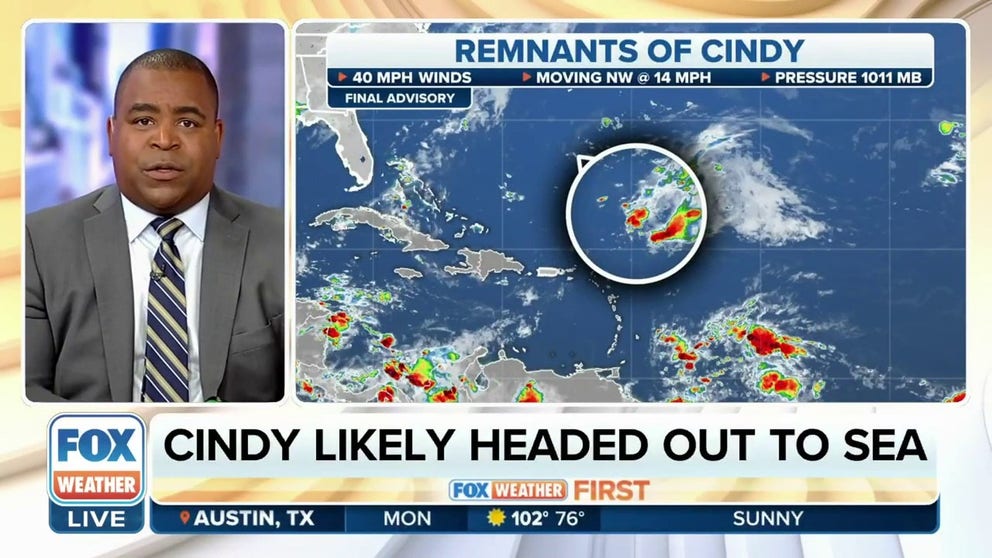Tropical Storm Cindy dissipates in Atlantic northeast of Caribbean islands
Although the tropical storm dissipated Sunday night, there are some indications that Cindy could redevelop farther north later this week as it heads in the general direction of Bermuda. Locally heavy rain and gusty winds would be the main threats across the archipelago.
Tropical Storm Cindy dissipates northeast of Caribbean islands
Tropical Storm Cindy dissipated Sunday night as it spun northeast of the Caribbean islands in the Atlantic Ocean.
Tropical Storm Cindy dissipated as it passed northeast of the Caribbean islands on Sunday night. Cindy formed in the central Atlantic last Thursday on the heels of Tropical Storm Bret, which dissipated over the central Caribbean Sea late Saturday afternoon.
This marked the first time in recorded history that two tropical cyclones formed east of the Lesser Antilles in the tropical Atlantic during the month of June.
Where is Tropical Storm Cindy?
As of Sunday night, Cindy was centered about 375 miles north-northeast of the northern Leeward Islands of the Caribbean.
Cindy's maximum sustained winds weakened to about 40 mph in the storm's final advisory issued by the National Hurricane Center.
HERE ARE THE BUZZWORDS YOU'LL BE HEARING DURING HURRICANE SEASON

(FOX Weather)
What is the forecast for Tropical Storm Cindy?
Cindy was moving northwestward at about 14 mph on Sunday night. It was expected to continue on a northwest trajectory as it weakened further.
Although the tropical storm dissipated Sunday night, there are some indications that Cindy could redevelop farther north later this week as it heads in the general direction of Bermuda. Locally heavy rain and gusty winds would be the main threats across the archipelago.

(FOX Weather)
FOX Weather Hurricane Specialist Bryan Norcross noted that the warm waters and early tropical cyclone formation in the tropical Atlantic Ocean are unprecedented for this time of year, with tropical storms Arlene, Bret and now Cindy already roaming the basin this month.
"We've never had a system that far east in June," Norcross said in reference to Tropical Storm Bret. "And this is at least significantly caused by the extremely warm water in the eastern part of the Atlantic this year. And not just in the tropical Atlantic, but all of the eastern Atlantic has really changed the weather pattern in this way that these systems can develop this early."
OFF THE CHARTS: OCEAN SURFACE TEMPERATURES REACH RECORD HIGH
According to long-term averages from the NHC, the season's first named storm doesn't typically form until June 20, the second named storm doesn't usually develop until July 17, and the third named storm doesn't tend to form until Aug. 3, so the Atlantic is off to a very fast start this year.
NO JUNE ON RECORD HAS HAD 2 STORMS FORM IN TROPICAL ATLANTIC WATERS EAST OF CARIBBEAN ISLANDS
Hurricane season officially began on June 1. Arlene, the first named storm of the 2023 Atlantic hurricane season, formed on June 2.
